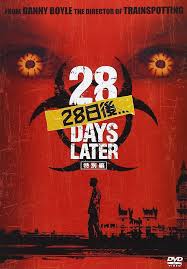The Legacy of 28 Days Later in Horror Cinema

Introduction
The 2002 film 28 Days Later, directed by Danny Boyle, significantly reshaped the landscape of horror cinema. Combining elements of science fiction and post-apocalyptic narratives, the film introduced audiences to a new breed of horror—one characterized by intense suspense and a gritty sense of realism. With the resurgence of interest in zombie films in recent years, the relevance of 28 Days Later remains potent, inspiring countless filmmakers and influencing a new generation of horror enthusiasts.
The Premise and Impact
28 Days Later follows the story of Jim, played by Cillian Murphy, who awakens from a coma to find London deserted, overrun by ‘infected’ individuals driven by rage. The film’s unique premise, rooted in a viral outbreak rather than traditional zombies, breathed new life into the genre and highlighted the vulnerability of society in the face of catastrophe. Boyle’s innovative approach to filmmaking, employing digital cameras, allowed for a raw, visceral aesthetic that heightened the film’s tension and urgency.
Cultural Significance
The cultural significance of 28 Days Later extends beyond its box office success; it effectively redefined horror narratives and tropes. The film paved the way for subsequent hits like The Walking Dead and World War Z, both of which borrowed heavily from its themes and stylistic choices. Furthermore, the portrayal of societal collapse and human relationships amidst chaos resonated during times of global crises, such as the COVID-19 pandemic, further solidifying its relevance.
Conclusion
In conclusion, 28 Days Later is more than just a horror film; it serves as a reflection on human nature and societal fragility. Its innovative storytelling and cultural impact have solidified its status as a cinematic milestone. As the horror genre continues to evolve, the lessons gleaned from Boyle’s work remind us of the delicate balance between civilization and chaos. Audiences will likely continue to explore and revisit this influential film, ensuring its legacy endures for years to come.
